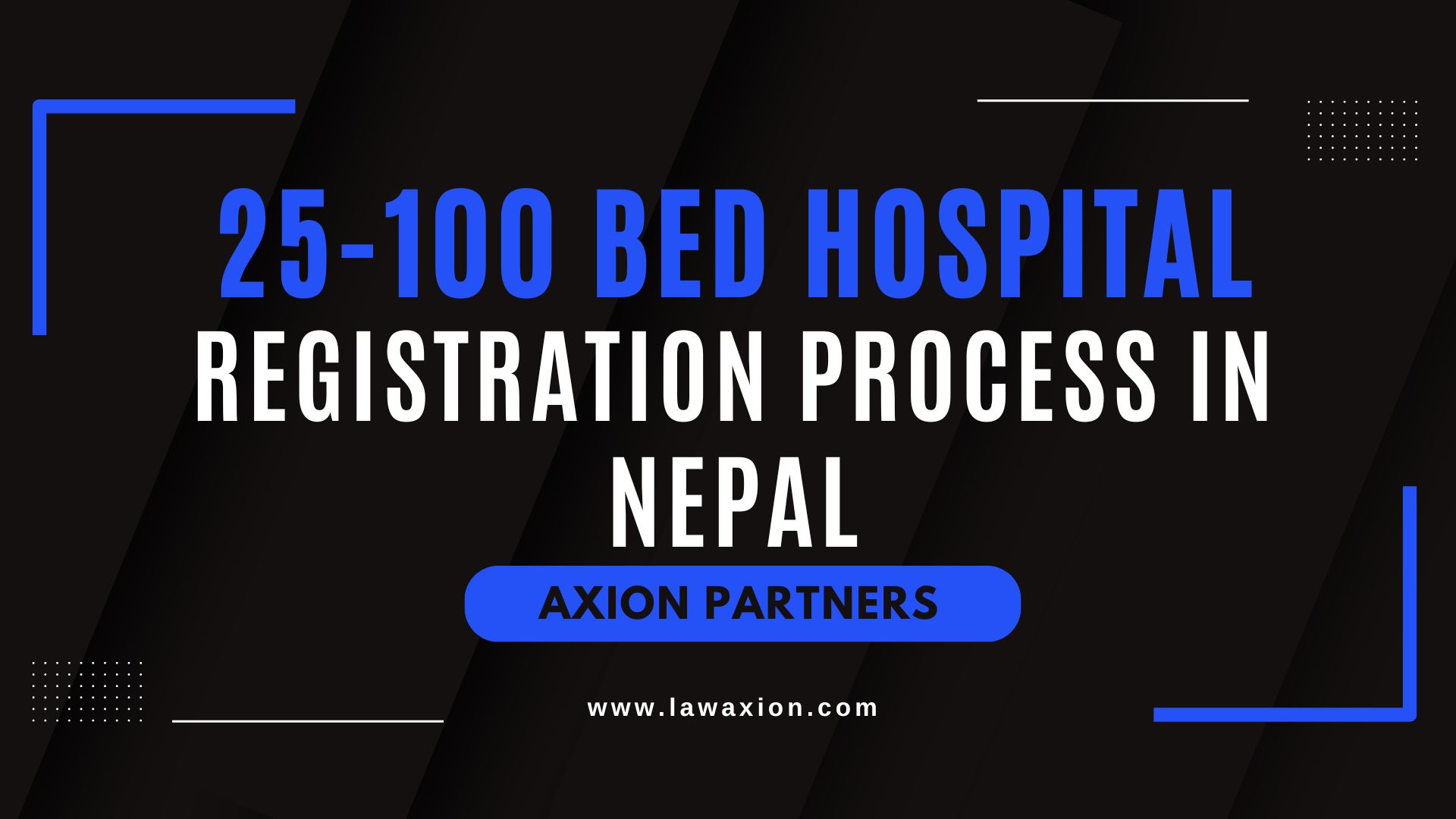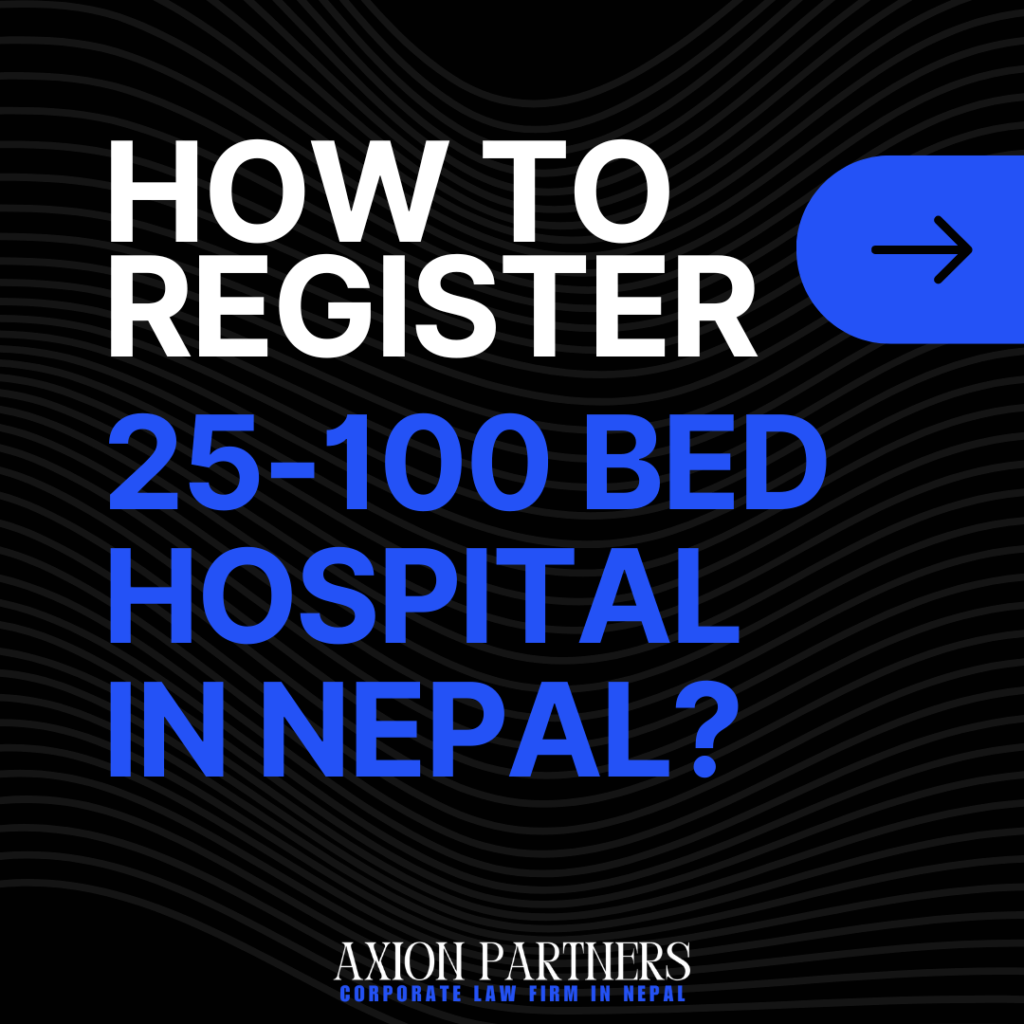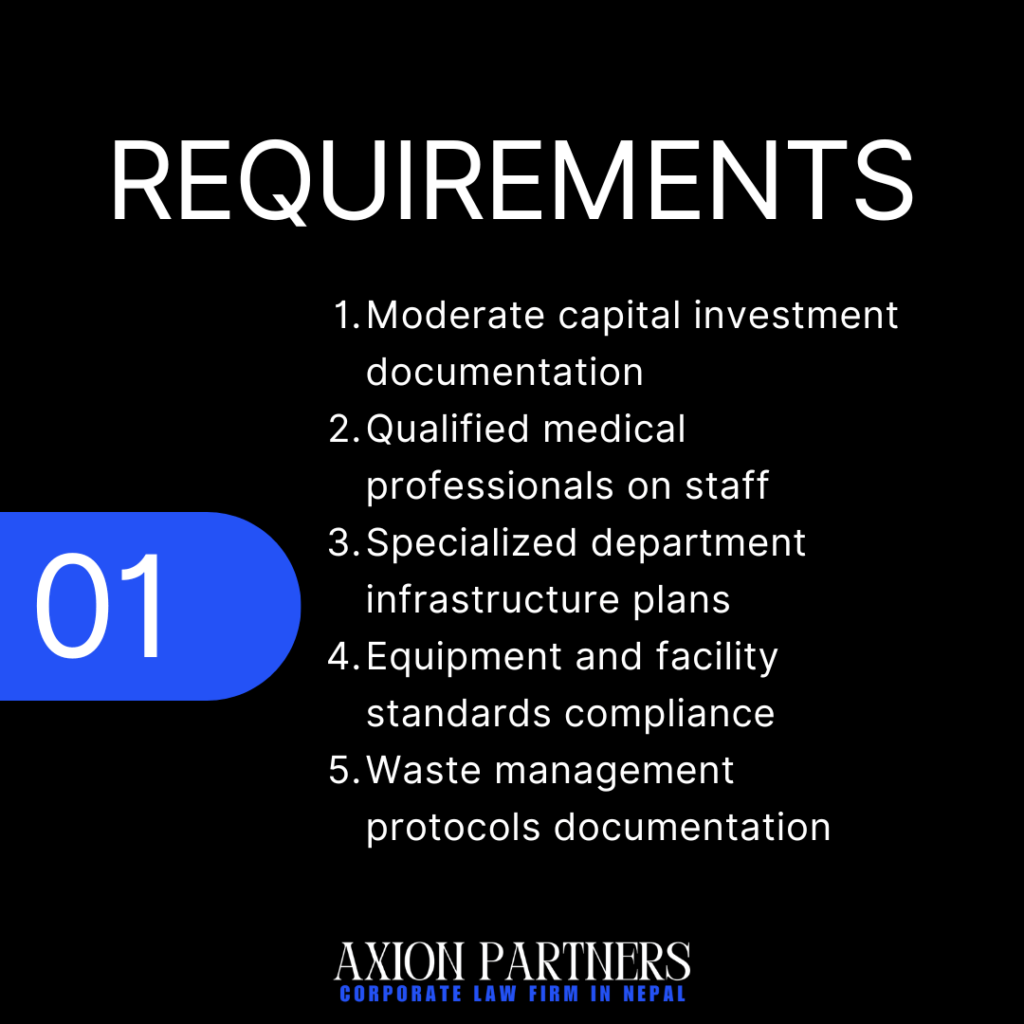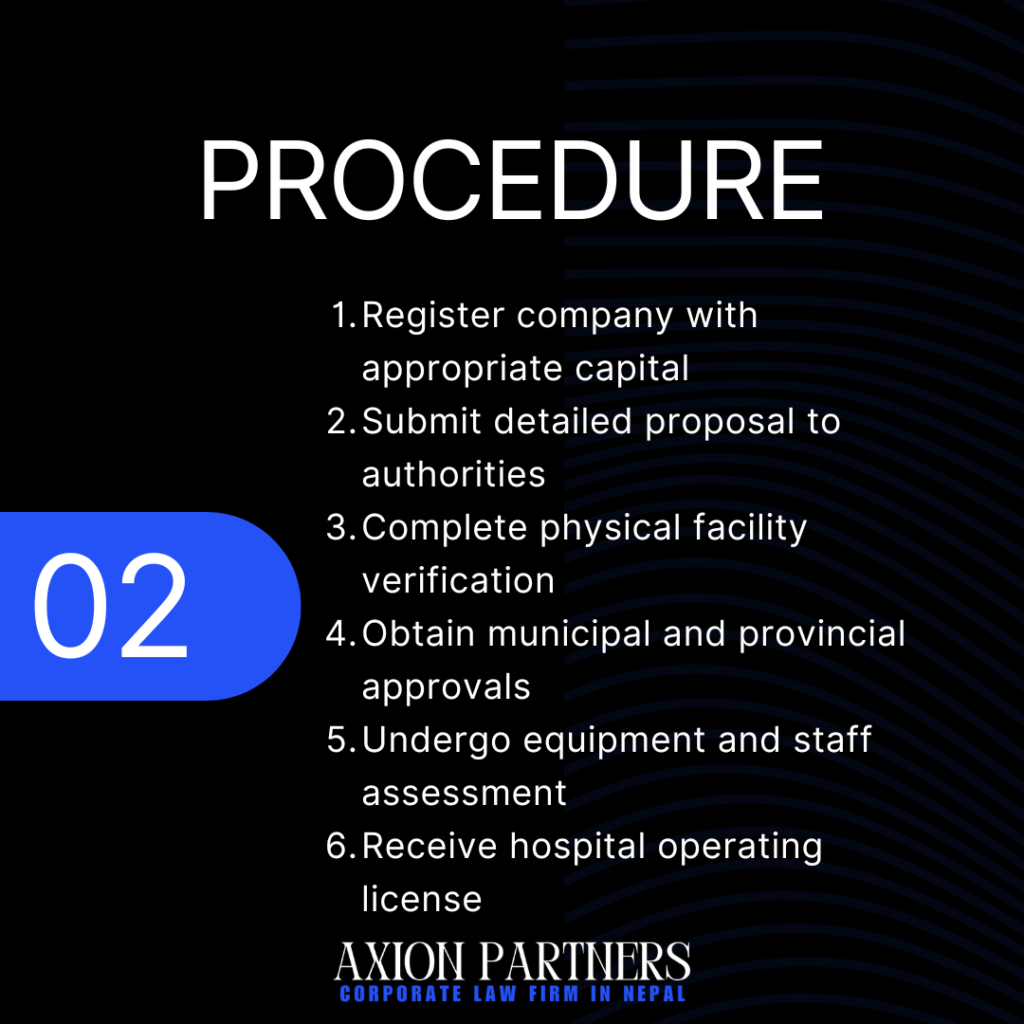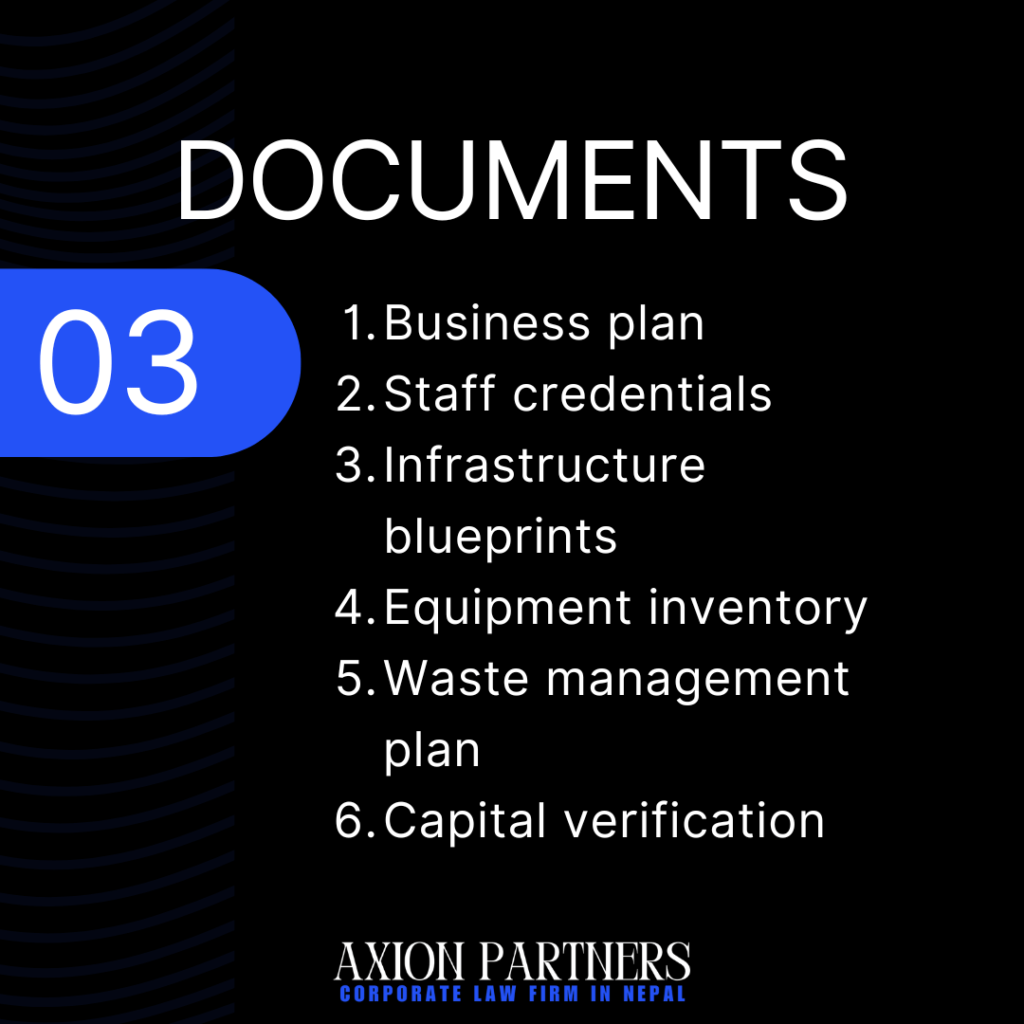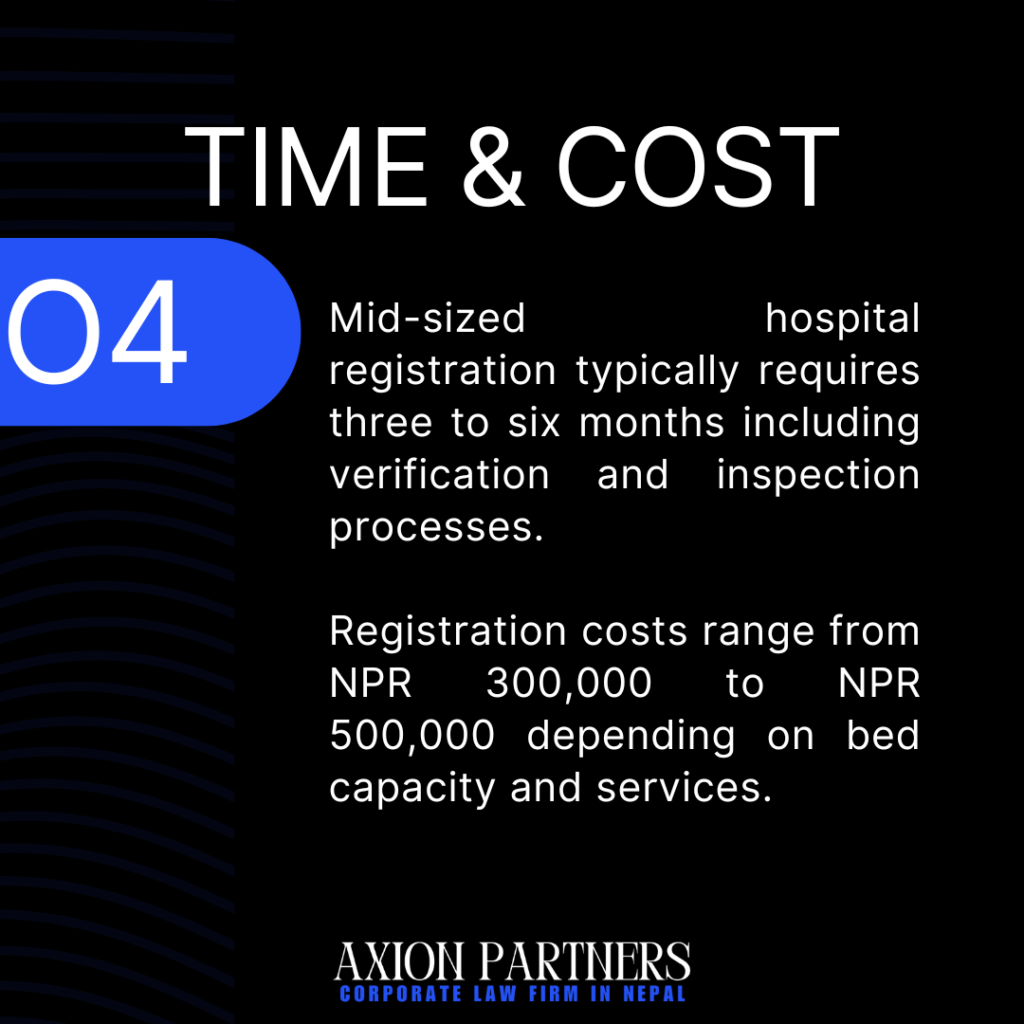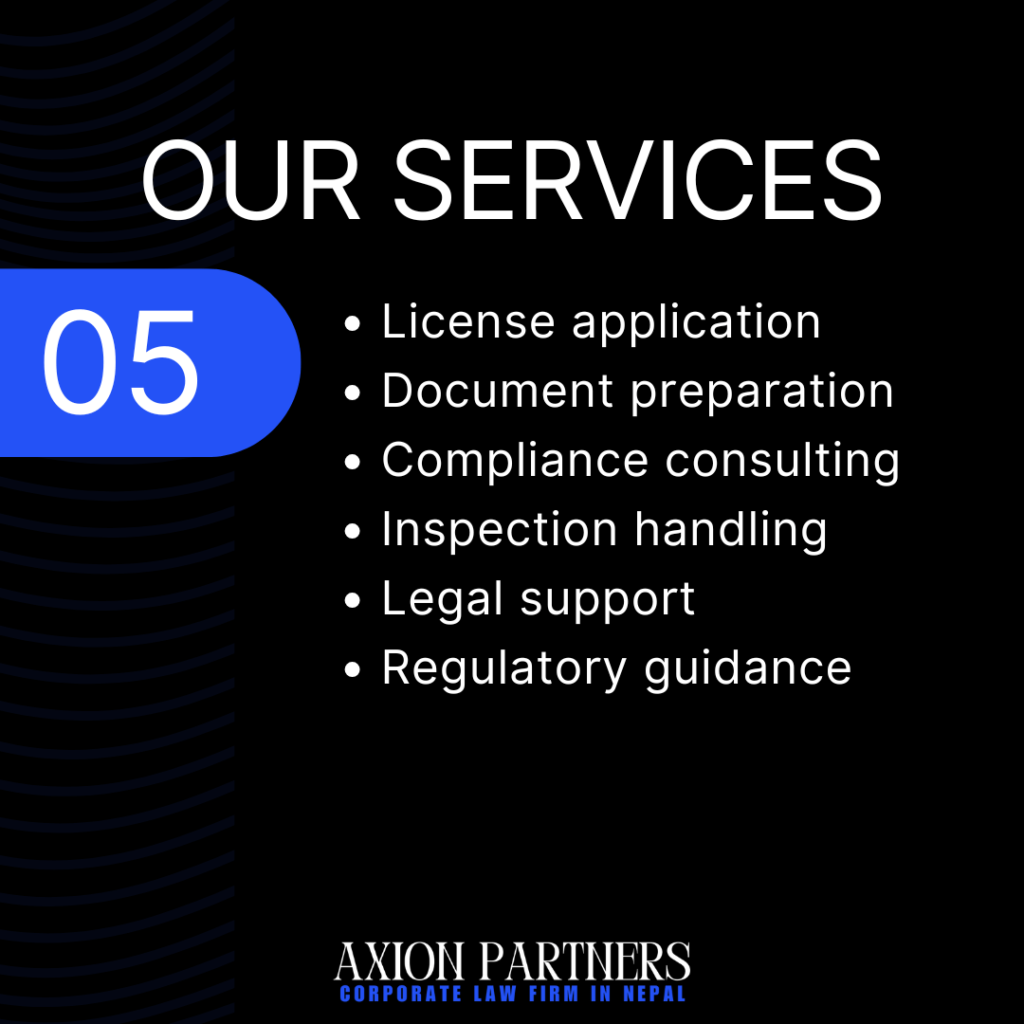Hospital registration in Nepal is a vital process for establishing healthcare facilities. If you’re planning to set up a hospital with 25-100 beds, it’s essential to understand the steps involved. The registration ensures your hospital meets the necessary standards for infrastructure, equipment, staff, and patient care, as mandated by the Ministry of Health and Population (MoHP).
The process is governed by the Nepal Health Sector Strategy 2015-2020 and the Public Health Service Act, 2075 (2018). These laws aim to provide quality healthcare to the Nepali people while ensuring hospitals operate legally and efficiently.
This guide covers everything you need to know about the hospital registration process in Nepal along with medical company registration process in Nepal with guideline for health institution establishment operation upgrade etc.
Legal Framework for 25-100 Bed Hospital Establishment
The legal foundation for establishing a hospital in Nepal is rooted in several key pieces of legislation:
- Public Health Service Act, 2075 (2018)
- Nepal Health Professional Council Act, 2053 (1997)
- Nepal Medical Council Act, 2020 (1964)
- Hospital Operation and Management Guidelines, 2069 (2013)
These laws collectively define the regulatory framework within which hospitals must operate. They outline the standards for healthcare delivery, professional conduct, and institutional management. Compliance with these legal provisions is mandatory and forms the basis of the registration process.
Legal Considerations
- The Public Health Service Act, 2075 (2018) stipulates that all healthcare institutions must be registered with the MoHP.
- The Nepal Medical Council Act regulates the practice of medicine and ensures that medical professionals meet the required qualifications.
- The Hospital Operation and Management Guidelines provide specific criteria for different categories of hospitals based on bed capacity and services offered.
Documents Required for Hospital Registration Process in Nepal
- Completed application form prescribed by the MoHP
- Detailed project proposal including:
- Hospital vision and mission statement
- Organizational structure and management plan
- Services to be offered and bed distribution plan
- Human resource plan detailing staffing at all levels
- Architectural blueprints and building plans approved by local authorities
- Environmental Impact Assessment (EIA) report
- Fire safety clearance from the local fire department
- Proof of capital investment and financial viability
- List of medical equipment with specifications
- Curriculum vitae of key medical and administrative staff
- Copies of academic and professional certificates of medical personnel
- Memorandum and Articles of Association (for private limited companies)
Ensuring all documentation is complete and accurate is vital to avoid delays in the registration process.
Large Hospital Registration Process with Health Ministry in Nepal
The registration process for a 25-100 bed hospital in Nepal follows a structured pathway:
- Pre-application consultation: Schedule a meeting with the MoHP to discuss the project and understand specific requirements.
- Document preparation: Compile all necessary documents as outlined in the previous section.
- Application submission: Submit the completed application form along with all required documents to the MoHP.
- Initial review: The MoHP conducts a preliminary review of the application to ensure completeness.
- Site inspection: A team from the MoHP visits the proposed hospital site to verify infrastructure and equipment.
- Technical committee evaluation: A specialized committee assesses the technical aspects of the proposal.
- Approval and registration: Upon satisfactory evaluation, the MoHP issues a registration certificate.
This process typically takes 3-6 months,
Infrastructure Requirements for Medical Facilities
The infrastructure requirements for a 25-100 bed hospital in Nepal are stringent and designed to ensure patient safety and quality care. The MoHP has set forth detailed specifications that must be met:
Building and Space Requirements
- Minimum land area of 1 ropani (5476 sq. ft.) per 25 beds
- Separate wards for male and female patients
- Isolation rooms for infectious disease cases
- Dedicated spaces for outpatient departments (OPD), emergency services, and diagnostic facilities
- Proper ventilation and natural lighting in all patient areas
- Accessibility features for differently-abled individuals
Utility and Support Services
- Reliable electricity supply with backup generators
- Clean water supply and proper sewage disposal systems
- Waste management facilities compliant with environmental regulations
- Fire safety equipment and emergency exits
Meeting these infrastructure requirements is essential for obtaining registration approval from the MoHP.
Requirements for Large Hospital Registration
The technical aspects of hospital registration involve ensuring that the facility is equipped to provide the level of care commensurate with its bed capacity. For a 25-100 bed hospital, the following technical requirements must be met:
Medical Equipment Standards
- Advanced life support equipment in emergency and intensive care units
- Diagnostic imaging facilities including X-ray and ultrasound machines
- Laboratory equipment for routine and specialized tests
- Sterilization and disinfection equipment
Information Technology Infrastructure
- Hospital management information system (HMIS)
- Electronic medical records (EMR) system
- Telemedicine capabilities (recommended but not mandatory)
Quality Control Measures
- Established protocols for infection control
- Quality assurance mechanisms for all medical procedures
- Regular equipment maintenance and calibration schedules
Demonstrating compliance with these technical requirements is crucial during the registration inspection process.
Financial Requirements and Capital Structure Details
Establishing a 25-100 bed hospital requires significant financial investment. The MoHP has set minimum capital requirements based on bed capacity:
- For 25-50 beds: NPR 50 million (approximately USD 420,000)
- For 51-100 beds: NPR 100 million (approximately USD 840,000)
Capital Structure Considerations
- Equity to debt ratio should be at least 30:70
- Proof of capital adequacy must be provided through bank statements or commitment letters
- A detailed financial projection for the first five years of operation is required
It’s important to note that these are minimum requirements, and actual costs may be significantly higher depending on the scope and quality of services offered.
Online Company Registration in Nepal
Human Resource Requirements for Hospital Registration
Staffing a 25-100 bed hospital in Nepal requires a diverse team of healthcare professionals. The MoHP mandates specific staffing ratios:
Medical Staff
- One doctor per 4 beds
- One nurse per 3 beds in general wards
- One nurse per bed in intensive care units
Specialist Requirements
- At least one specialist each in Medicine, Surgery, Gynecology/Obstetrics, and Pediatrics
- Anesthesiologist for hospitals offering surgical services
- Radiologist for hospitals with imaging facilities
Support Staff
- Pharmacists, laboratory technicians, and radiographers as per service offerings
- Administrative and maintenance personnel
Ensuring adequate staffing levels and qualifications is crucial for registration approval and ongoing compliance.
Equipment and Medical Facility Standards
The equipment standards for a 25-100 bed hospital in Nepal are designed to ensure comprehensive patient care:
Essential Equipment
- Emergency room equipment including defibrillators and ventilators
- Operating theater equipment for hospitals offering surgical services
- Intensive care unit equipment including monitors and life support systems
- Laboratory equipment for routine and specialized tests
- Imaging equipment such as X-ray and ultrasound machines
Facility Standards
- Dedicated areas for outpatient services, emergency care, and inpatient wards
- Properly equipped pharmacy and medical stores
- Central sterilization and supply department (CSSD)
- Kitchen facilities for patient meal preparation
Meeting these equipment and facility standards is essential for registration approval and ensuring quality patient care.
Environmental and Safety Compliance Measures
Environmental and safety compliance is a critical aspect of hospital registration in Nepal:
Environmental Considerations
- Proper medical waste management system
- Effluent treatment plant for hospitals with more than 50 beds
- Compliance with national environmental standards
Safety Measures
- Fire safety equipment including alarms, extinguishers, and sprinkler systems
- Emergency evacuation plans and regular drills
- Occupational health and safety protocols for staff
Demonstrating robust environmental and safety measures is crucial for obtaining and maintaining hospital registration.
Read More
Energy Generation License Process in Nepal
Quality Assurance and Medical Standards
Quality assurance in healthcare delivery is paramount for hospital registration and operation in Nepal:
Quality Management Systems
- Implementation of a comprehensive quality management system
- Regular internal audits and performance reviews
- Patient feedback mechanisms and complaint resolution processes
Medical Standards
- Adherence to national treatment guidelines
- Continuous medical education programs for staff
- Participation in national health programs and initiatives
Maintaining high quality and medical standards is essential for registration renewal and building trust with patients and regulatory bodies.
Registration Fees and Government Charges
The registration process for a 25-100 bed hospital in Nepal involves various fees and charges:
- Initial registration fee: NPR 50,000 (approximately USD 420)
- Annual renewal fee: NPR 25,000 (approximately USD 210)
- Inspection fees: Variable, based on hospital size and location
Additional charges may apply for specific licenses and permits required for hospital operation.
Timeline for Hospital Registration Completion
The timeline for completing the hospital registration process in Nepal can vary:
- Pre-application preparation: 2-3 months
- Application submission and initial review: 1 month
- Site inspection and technical evaluation: 1-2 months
- Final approval and registration issuance: 1 month
Total estimated timeline: 5-7 months
Factors affecting the timeline include the completeness of the application, responsiveness to MoHP queries, and the current workload of the regulatory bodies.
What to do after Hospital Registration in Nepal?
After successful registration, hospitals must maintain ongoing compliance:
- Annual renewal of registration certificate
- Regular reporting to the MoHP on key performance indicators
- Compliance with evolving healthcare regulations and standards
- Participation in national health programs and initiatives
Maintaining post-registration compliance is crucial for uninterrupted hospital operations and avoiding penalties.
Renewal and Monitoring Procedures
The MoHP conducts regular monitoring of registered hospitals:
- Annual inspections to verify continued compliance with standards
- Review of patient care quality and safety measures
- Assessment of financial stability and operational efficiency
Renewal of registration is contingent upon satisfactory performance in these monitoring procedures.
What is the minimum capital requirement for 25-100 bed hospitals?
The minimum capital requirement ranges from NPR 50 million for 25-50 bed hospitals to NPR 100 million for 51-100 bed hospitals to complete the Hospital Registration Process in Nepal.
How long does the Hospital registration process in Nepal take?
The registration process typically takes 5-7 months from initial application to final approval.
Can foreign investors own hospitals in Nepal?
Yes, foreign investors can own hospitals in Nepal, subject to foreign investment regulations and approval from the Investment Board of Nepal.
How does hospital registration work in Nepal?
Hospital registration in Nepal is a legal process overseen by the Ministry of Health and Population (MoHP). It ensures that hospitals meet the required standards for infrastructure, staff, equipment, and patient care. The Process: Submission of Documents, Meeting Health Regulations, Passing Inspections, and Compliance with Health Services.
What are the requirements for opening a clinic in Nepal?
The Requirements for opening a clinic in Nepal are:
A proper location with adequate space.
Qualified medical staff (doctors, nurses, etc.).
Necessary medical equipment and facilities.
Registration with the Ministry of Health and Population.
Compliance with local health and safety regulations.
Submission of required documentation and payment of fees.
How do you become a hospital registration person?
To become a hospital registration person in Nepal, you typically need to work within the Ministry of Health and Population or a related health regulatory body. Requirements may include a background in healthcare management, public health, or administrative experience. Specific training and certification may also be required to handle hospital registration procedures effectively.
What are the requirements for a 25-bedded hospital in Nepal?
Opening a 25-bedded hospital in Nepal requirements are as follows:
A physical space with proper infrastructure (ward rooms, emergency services, operation theaters, etc.).
Availability of qualified medical professionals (doctors, nurses, support staff).
Compliance with health standards and patient care regulations.
Proper equipment and medical supplies.
Registration with the Ministry of Health and Population.
Submission of legal documents and obtaining necessary licenses.
In conclusion, registering a 25-100 bed hospital in Nepal is a complex process that requires careful planning, substantial investment, and strict adherence to regulatory requirements. By following the guidelines outlined in this comprehensive guide, prospective hospital owners can navigate the registration process more effectively, ensuring compliance with all legal and operational standards set forth by the Ministry of Health and Population. The successful establishment of a hospital not only represents a significant business venture but also contributes to improving healthcare access and quality for the Nepali population.
Table of Contents
- 1 Legal Framework for 25-100 Bed Hospital Establishment
- 2 Documents Required for Hospital Registration Process in Nepal
- 3 Large Hospital Registration Process with Health Ministry in Nepal
- 4 Infrastructure Requirements for Medical Facilities
- 5 Requirements for Large Hospital Registration
- 6 Human Resource Requirements for Hospital Registration
- 7 What to do after Hospital Registration in Nepal?
- 7.1 What is the minimum capital requirement for 25-100 bed hospitals?
- 7.2 How long does the Hospital registration process in Nepal take?
- 7.3 Can foreign investors own hospitals in Nepal?
- 7.4 How does hospital registration work in Nepal?
- 7.5 What are the requirements for opening a clinic in Nepal?
- 7.6 How do you become a hospital registration person?
- 7.7 What are the requirements for a 25-bedded hospital in Nepal?

